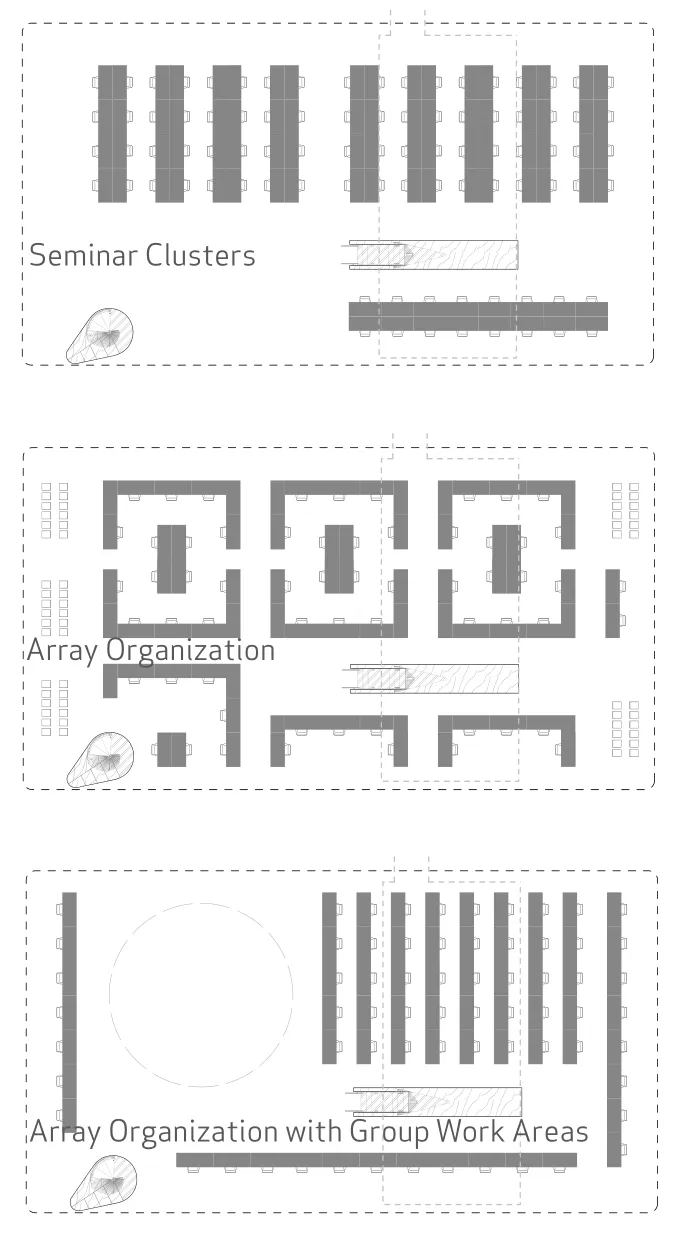欣曼科研大厦美国亚特兰大
2018-04-27NaderTehrani,JeffDee,ArthurChang等
设计负责人:Nader Tehrani, Office dA/NADAAA
项目经理:Daniel Gallagher
项目协调:Tom Beresford
设计团队:Jeff Dee, Arthur Chang, Remon Alberts,Brandon Clifford, Jonathan Palazzolo, John Houser,Sarah Dunbar, Samuel Ray Jacobson, Pepe Giner Ivars,
Harry Lowd, Marzouq A. Al-Mutairi, Yousif J. Alsaleem
合作建筑师:Lord, Aeck & Sargent
Collaborating Architect: Office dA/NADAAA
Principal in Charge: Nader Tehrani
Project Manager: Daniel Gallagher, AIA
Project Coordinator: Tom Beresford, LEED AP
Project Team: Jeff Dee, Arthur Chang, Remon Alberts, Brandon Clifford,
Jonathan Palazzolo, John Houser, Sarah Dunbar, Samuel Ray Jacobson,Pepe Giner Ivars, Harry Lowd, Marzouq A. Al-Mutairi, Yousif J. Alsaleem
Lord, Aeck & Sargent and Office dA/NADAAA in collaboration
该项目为佐治亚理工学院的一项重要建筑遗产注入了新的活力,将其改建为建筑学院的灵活附属建筑,包括工作室、实验室、教室和研究室。原建筑由一个50英尺高的大跨度工业顶棚,在垂直轴上重新规划,水平轴上保持开放和灵活性。不间断的地板主要作为工作室空间,但也可以重新配置用于大型组件。大跨度空间融入四方院和公共空间城市网络,最大程度的与学院建立联系。对于学校来说,重要的是新干预措施是与希恩曼早期现代主义的复合钢/砖石结构的教学阐述互相补充,而不是与其一争高下。翻修充分利用了该建筑的潜力,钢和胶合板巧妙结合,满足结构、规范、规划和可持续性的要求,获得LEED黄金级认证。
在该建筑内的各空间中,大跨度提供了最灵活的空间,可以在此空间内举办各类活动。如果是工作室设置,该空间可转换成演讲、艺术舞会、毕业典礼和大型装置安装的场地。为了满足提供更多工作室空间和一间学生休息室的要求,将在拟建的夹层中设置这些空间,而夹层的设计,确保因地制宜地将夹层悬挂在由无数薄钢构件组成的现有桥式起重机梁上。南翼采用新型螺旋楼梯——楼梯也是由上面的桁架悬吊——将新行政办公室和学生团体连接起来。一扇60英尺的垂直电梯门打开了通往南翼的高开间空间,为评图和展览提供了更大的高位置空间。由绞车控制的一组新的悬挂灯,为绘图大厅提供一般照明,同时也为其他活动提供便利。从这些元素中可以寻找到建筑的一般审美——一条悬垂的缆绳和线性结构为大跨度的高耸空间提供了一个灵活的中间平台。
The project re-energizes an important piece of Georgia Tech’s built heritage by transforming it into a flexible annex for the College of Architecture, including studio, lab, classroom and research spaces.The original building was anchored by a 50 ft. tall industrial high-bay shed, which was re-programmed in the vertical axis and left open and flexible in the horizontal axis. The uninterrupted floor functions primarily as studio space, but can be re-configured for large assemblies. The high-bay also participates in an urban network of quads and public spaces that articulate the College at large. It was important to the school that new interventions compliment, not compete with the pedagogical clarity of Hinman’s early modernist composite steel/masonry construction. The renovation tapped into the building’s latent potential with subtle grafts of steel and plywood to satisfy structural, code, program and sustainability requirements to achieve LEED Gold Certification.
Of the various spaces within the building the high-bay offers the most flexible space, within which many types of events can occur. A studio setting, the space can be transformed into a site for lectures, the Beaux-arts ball, graduation, and for large scale installations. Requirements for more studio space and a student lounge are accommodated in a proposed mezzanine, the“Crib”, designed to hang opportunistically from an existing bridge crane girder by myriad thin steel members. The south wing is activated with a new spiral staircase—also slung from the truss above—linking new administrative offices with the student body. A 60-foot vertical lift door opens up the high-bay space to the south wing, and offers expanded pinup space for reviews and exhibitions.A new array of suspended lights, controlled by winches, offer general lighting for the drafting hall while also facilitating for other events. A general æsthetic emerges from these elements—a filigree of suspended cables and lineaments produce a middle ground for the lofty expanse of the high bay room. The ground is horizontal and flexible, while the sky vertically programmed and saturated.











